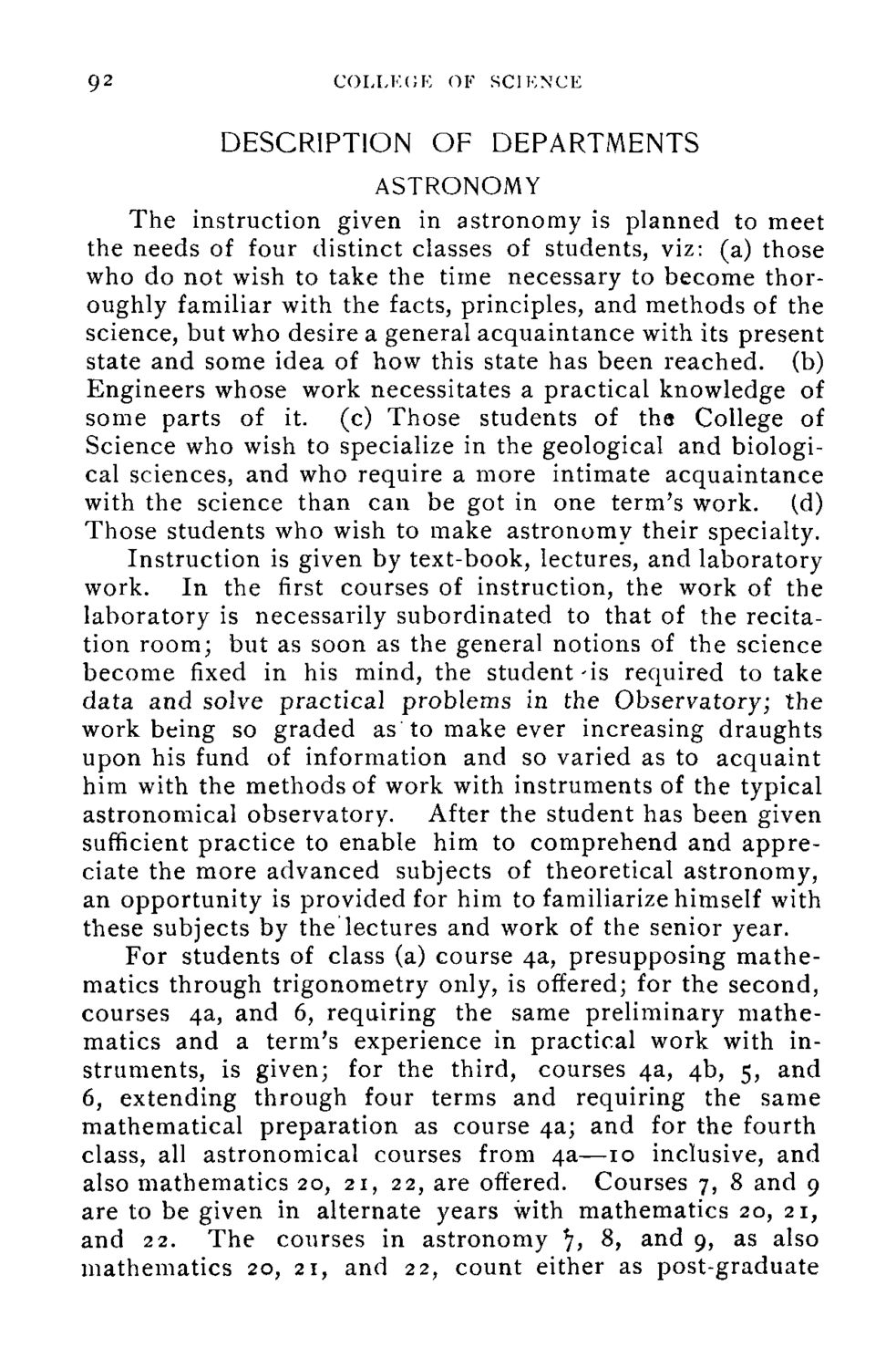| |
| |
Caption: Course Catalog - 1896-1897
This is a reduced-resolution page image for fast online browsing.

EXTRACTED TEXT FROM PAGE:
92 COLI.KCJK OF SCIKN'CE DESCRIPTION OF DEPARTMENTS ASTRONOMY The instruction given in astronomy is planned to meet the needs of four distinct classes of students, viz: (a) those who do not wish to take the time necessary to become thoroughly familiar with the facts, principles, and methods of the science, but who desire a general acquaintance with its present state and some idea of how this state has been reached, (b) Engineers whose work necessitates a practical knowledge of some parts of it. (c) Those students of the College of Science who wish to specialize in the geological and biological sciences, and who require a more intimate acquaintance with the science than can be got in one term's work, (d) Those students who wish to make astronomy their specialty. Instruction is given by text-book, lectures, and laboratory work. In the first courses of instruction, the work of the laboratory is necessarily subordinated to that of the recitation room; but as soon as the general notions of the science become fixed in his mind, the student -is required to take data and solve practical problems in the Observatory; the work being so graded as to make ever increasing draughts upon his fund of information and so varied as to acquaint him with the methods of work with instruments of the typical astronomical observatory. After the student has been given sufficient practice to enable him to comprehend and appreciate the more advanced subjects of theoretical astronomy, an opportunity is provided for him to familiarize himself with these subjects by the lectures and work of the senior year. For students of class (a) course 4a, presupposing mathematics through trigonometry only, is offered; for the second, courses 4a, and 6, requiring the same preliminary mathematics and a term's experience in practical work with instruments, is given; for the third, courses 4a, 4b, 5, and 6, extending through four terms and requiring the same mathematical preparation as course 4a; and for the fourth class, all astronomical courses from 4a—10 inclusive, and also mathematics 20, 21, 22, are offered. Courses 7, 8 and 9 are to be given in alternate years with mathematics 20, 21, and 22. The courses in astronomy ^, 8, and 9, as also mathematics 20, 21, and 22, count either as post-graduate
| |